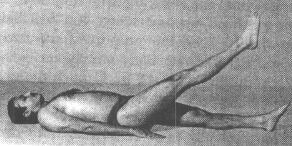Constipation may be defines as a common disturbance of the digestive tract. Constipation is when you have trouble having bowel movements. Constipation refers to infrequent bowel movement, incomplete evacuation of bowel, decrease in the volume or weight of the bowel. It may also refer to passage of small amounts of hard and dry bowel movements. As a result they find their way in the blood stream from where they enter all parts of the body causing malfunctioning of the parts. Appendicitis, rheumatism,arthritis, high blood pressure, cataract, and cancer are few of the diseases in which chronic constipation is an important predisposing factor.
Causes : Low fiber diet, low intake of fluids, some particular diseases like hyper acidity, diabetes, colitis, sluggish liver and tumor, weak abdominal muscles, holding back stools when in pressure, irregular meals, incomplete chewing of food, high intake of refined food, emotional disturbances, smoking, consuming to much tea and coffee, intake of illicit drugs, pregnancy, lack of physical activity, frequent use of purgatives.
Symptoms : No bowel movements at least once a day, pain in the abdomen, heaviness in the stomach, wind formation, mucus coated tongue, headache, loss of appetite, pain in the lower legs, fever, nausea, vertigo, palpitation, drowsiness, mouth ulcer, foul breath, dark circles under the eyes, varicose vein, heart burns, acidity etc.
Home remedies :
- Drinking lemon juice mixed with warm water, 2-3 times day.
- 1 or 2 tsp of aloe vera gel can be taken, twice a day.
- In children, a suppository made of the stalk of betel leaf dipped in Castor oil can be introduced in the rectum instantly relieves it.
- Try 1 tsp of corn syrup with 8 part of water.
- Add a little sugar or some honey to a glass of milk and drink it, twice a day.
- Soak one date (seedless) over night in half a cup of water. In the morning mash the date with water and remove the pulp. Take one 1 tsp of this water 3-4 times a day.
- Drink 1/2 tsp honey in 1/2 cup warm water 2-3 times a day.
- mix 1/2 cup olive oil with 1/2 cup orange juice and drink to cure constipation.
- Take 3 tsp of sat isabgol in milk or warm water at bed time.It is also helpful.
- Mango is a natural reliever of constipation.
- Dip 10-12 grapes(dry) without seeds in milk and boil the milk. drink milk separately and chew the grapes. when taken at bed time.
- Dip Spiegel seeds 5-10 grams in 200 grams of warm milk. add sugar and take this in the morning time.
- Mix 1/4 tsp of Epsom salt to 1/2 a glass of water and drink.
- Daily intake of Guava with empty stomach in the morning is highly beneficial.
- Take some fennel seeds and add taken to a glass full of warm water. drink this water each night before going to bed fennel has properties in curing digestive problems.
- Carrot juice mixed with spinach juice gives immediate relief.
- Mix the powder of one dry ginger with the powder of some senna leaves in equal properties. Put these powders in a cup of luke warm water. drink this while it is still a little warm every night.
- 1-2 tsp of Almond oil taken with milk at night for 3-4 days also relieves constipation.
- Drink 4-5 cups of the water before brushing teeth or eating breakfast on morning. This is an old Chinese remedy.
- Take 2-3 seeds each of sunflower, almond, sesame and flax seeds. grind it and make a thin powder eat this herbal powder (1 tsp) for a week either with fruit juice or salads.
- Vegetable palak(spinach) when taken in raw or cooked from has tremendous properties.
- Take 10-12 piece of raisin (munnakka) wash and remove the seeds and then biol them with a glass of milk once the milk is boiled, eat the raisins and drink the milk. Next day you will find good result.
- Vajrasana is one of the yogasana beneficial for constipation.
- Trikonasana, Bhujangasana which are beneficial for maintaining good bowel movements.
Herbal remedies :
- Triphala : It is composed of three fruits, Hritaki, amalaki, and bibhitaki. It combines the properties of both a purgative, laxative and a lubricating bulk laxative, take 1-2 cap, twice a day , after food.
Do's and don't :
- Drink 8-10 glasses of water daily. keep the water overnight in a copper vessel and drink it when you wake up in the morning.
- Avoid dry foods. your food must contain amounts of oil or ghee in it.
- Drink a 1 tsp of ghee with glassful of warm milk, when going to bed.
- Go for morning walk by having 2-3 glasses of warm water.
- Do not take rice when suffering from it.
- Include fresh fruits and green leafy vegetables in your diet.
- Papaya and sugar cane like fruits and tomato, beetroot salads are very useful in it.
- Do not eat foods that are difficult to digest.
- Do aerobic exercise such as walking, swimming.
- Don't skip your breakfast.
- freshly cooked food and chew food thoroughly.
- Eat only when hungry and maintain at least 4 hours between meals.
- Do not mix too many types of foods in one meal.
 Baddha padmasana means locked or bound in Sanskrit. This pose is called locked lotus pose, because the limbs of the body, while in padmasana posture, are firmly locked up and immobilized to enhance its steadiness. This asana is not meant for meditation. This is chiefly meant for health- improvement and for making the body strong. This asana is difficult to perform. Those who are unable to practice this asana should not be disappointed. They should patiently try to accomplish the final position.
Baddha padmasana means locked or bound in Sanskrit. This pose is called locked lotus pose, because the limbs of the body, while in padmasana posture, are firmly locked up and immobilized to enhance its steadiness. This asana is not meant for meditation. This is chiefly meant for health- improvement and for making the body strong. This asana is difficult to perform. Those who are unable to practice this asana should not be disappointed. They should patiently try to accomplish the final position.






